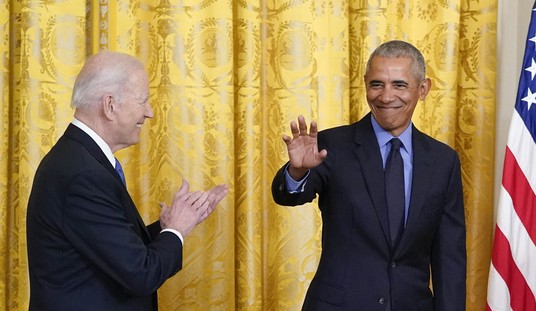The federal government broke America's higher education system. In the March edition of Townhall Magazine Joel Gehrke explains how we can fix it.
The United States is suffering from a crisis in higher education. Our economy desperately needs highly skilled workers to stay competitive in today’s global economy. But while our existing system of four-year higher education institutions is working well for some highly talented and wealthy students, millions more are graduating without the skills employers want and saddled with tens of thousands in debt.
Collectively, Americans owe more than $1 trillion in student loan debt. That is far more than they owe in credit card or car loan debt. And the youngest Americans owe the most since tuitions have skyrocketed as the amount of federal financial aid for higher education has increased.
Higher debt at an early age means kids moving back in with their parents, cars not bought, marriages not joined, and new homes not built. It is a huge drag on the entire economy.
Something must change.
SUCCESSFUL INNOVATION CUT SHORT
There are people trying to change higher education. Some of them are even backed by millions in venture capital funding. But, with help from the federal government, the current cartel of higher education providers are shutting them out.
Take Ivy Bridge College, for example, an institution created through a partnership between Tiffin University in Ohio and Altius Education, Inc. Founded in 2008, Ivy Bridge College expanded access to four-year higher ed institutions by first offering traditionally underserved students a shot at an associate’s degree. By offering extensive support services, including not just tutoring but life-coaching as well, Ivy Bridge established a strong associate’s degree graduation track record, and then, depending on their grades, guaranteed them a transfer to a partnered traditional four-year institution, including household brand names like Arizona State.
Because of its relationship with Tiffin, Ivy Bridge students could pay their tuition with federal loans, which would generate revenue for the university and Altius Education, which financed the company.
Altius and Tiffin worked well together. The Higher Learning Commission, which accredits Tiffin, praised Ivy Bridge in 2010 for “deliver[ing] education to a relatively underserved population,” according to documents obtained by Townhall. By August of 2012, Ivy Bridge had almost 2,200 students. That same year, the Bill and Melinda Gates Foundation awarded the for-profit/non-profit college a Next Generation Learning grant. A year later, HLC told Tiffin that the university must cut ties with Ivy Bridge or risk the loss of its accreditation. Tiffin complied, which has effectively killed Ivy Bridge by cutting it off from federal funding.
“The thing that changed was the political environment that the accreditors were in,” Altius CEO Paul Freedman told Townhall. And that political environment changed when Higher Learning Commission President Sylvia Manning was hauled before the Senate Education Committee by Chairman Tom Harkin (D-IA) to explain the rise of for-profit colleges such as Kaplan University and the University of Phoenix.
Harkin and his colleagues based their criticism of Manning and HLC on the case of Ashford University, a for-profit institution in Iowa once known as the Franciscan University of the Prairies. With the college on its last legs in 2005, HLC, under the leadership of its previous president, allowed a company called Bridgepoint Education, Inc., to purchase the accredited religious school without putting the new for-profit model through an accreditation review.
Six years later, Ashford enrolled 78,000 students receiving more than $600 million in federal subsidies annually. Sixty- three percent of the people seeking four-year bachelor’s degrees dropped out in the first year, according to Harkin, which looks good compared to the 84 percent dropout rate among students pursuing a two-year associate’s degree.
“I think this is a scam, an absolute scam,” Harkin said.
Manning left that hearing having promised that HLC would cut off the shortcut to accreditation (and thus federal dollars) that Bridgepoint had taken. “What happened in 2005 could not happen today,” she said.
When Ivy Bridge College’s for-profit parent company, Altius, tried to operate independently from Tiffin two years later as part of a joint venture, HLC blocked the change and reversed its earlier approval of Tiffin’s relationship with the for-profit institution.
“They’ve boxed the innovators out of higher education,” Freedman told Buzzfeed in an August report on the demise of Ivy Bridge.
THE ACCREDITING COUNTRY CLUB
Accrediting agencies have long played an important role in higher education, most graduate schools won’t accept students who don’t have a degree from an accredited institution, but they acquired the power of life-and-death over colleges and universities with the advent of federal student aid funding in the middle of the 20th century. In 1944, Congress passed the GI Bill, which gave financial aid to veterans returning from the Second World War. The Higher Education Act of 1965 authorized even more college subsidies, known as Title IV funding.
Con artists loved the new programs. They took advantage of the subsidies by setting up “degree mills,” fake colleges preying on students who paid for worthless diplomas with taxpayer dollars. Congress knew of the problem, but the lawmakers didn’t know how to separate the wheat from the chaff.
Enter the accrediting agencies, the private associations of colleges that had collaborated together for decades without the help of the federal government. The first accreditor, the Southern Association of Colleges and Schools was founded in 1895 and provided a national template for how institutions of higher education would improve themselves.
“[SACS] started with the purpose of collegially sharing best practices among the universities,” Freedman said. “They had membership criteria, [but they] had no authority. You imagine country clubs without the golf.”
Those “social clubs” have grown strong with age, as Freedman learned when an accrediting body shut down a college that his company had founded in partnership with Tiffin. When Congress updated the GI Bill to cover veterans of the Korean War, it stipulated that students could only use federal funds at schools that had the approval of regional accrediting agencies.
“Accreditors have become pseudo deputized government organizations,” according to Freedman. And colleges welcomed the government management because of their desire for the taxpayer dollars.
“That $157 billion a year is the oxygen that keeps higher ed alive,” Southern New Hampshire University President Paul LeBlanc told Townhall.
IT PAYS TO BE PART OF THE CLUB
Recent developments at Southern New Hampshire University show that skepticism about for-profit institutions hasn’t entirely stifled online innovations, though. Under LeBlanc’s leadership, SNHU has developed into “the Amazon.com of higher education,” as University of Southern California’s Gabriel Kahn wrote in Slate. The private school had a small student body and big financial problems in 2003. Now, it has 34,000 enrollees in 180 different online degree programs. “Our very large scale online programs look a lot like traditional programs except that they’re online,” LeBlanc said, insofar as students receive instruction to achieve credit hours and eventually earn a degree.
Despite the volume, SNHU doesn’t follow the pedagogical method associated with another recent development in education known as MOOCs, or massive open online courses.
MOOCs tend to imitate the “sage on the stage” teaching method found at many campuses around the country: students listen to a lecture from a professor, but have no personal contact with the instructor. Online classes at SNHU, by contrast, have put an average of 22 students in touch with a designated faculty member via email and discussion boards as they do coursework developed by “subject matter experts working with instructional designers,” LeBlanc explained.
Not only does SNHU have a large-scale online degree program, they have an online competency-based associate’s degree program. That is, students don’t earn credits toward a degree by taking classes from instructors; instead, they demonstrate competency in an array of skills by completing projects.
“At its heart, competency-based education is simply the direct assessment of a what a student knows,” Steve Phillips of Thomas Edison State College in New Jersey, which also operates a competency-based program, explained to Townhall. SNHU’s College for America recently became the first competency-based program in the country to receive the imprimatur of a regional accreditor.
To receive that accreditation, SNHU had to overcome a strong bias against competency-based programs held by the accrediting agencies. “There’s been a lot of hand-wringing over accreditors, but we’ve really had a very positive experience,” LeBlanc told said.
It probably also didn’t hurt that LeBlanc used to be the vice president of his school’s accreditor, the New England Association of Schools and Colleges.
COMPETING MODELS FOR SUCCESS
Bureaucratic hurdles remain, though. “The problem with many of the newer competency-based programs is that federal regulations make it difficult for students to change between a competency-based program and a traditional program or vice versa,” Phillips explained. “So if a student is interested in trying a competency-based program, but then it turns out they don’t like it, they can find themselves in a difficult situation.”
Altius’ Paul Freedman can only look at SNHU with a combination of envy and respect. “If they were a for-profit doing the same thing, they would have had accreditors breathing down their neck,” he said. “Southern New Hampshire is looked at as a phenomenal example of innovation in higher education, which it should be, it’s just ... I wish there weren’t such restrictions on that in education, because there need to be more examples of that rather than fewer.”
Some corporations have sidestepped the accreditation process by communicating, or helping prospective workers to communicate, with employers who typically rely on a college degree to identify desirable employees.
One such company, Degreed, helps users by creating an online profile detailing their base of knowledge for employers.
“All that is gold does not glitter, not all who wander are lost ...” Degreed says on its website. The line comes from a poem in J.R.R. Tolkien’s “The Fellowship of the Rings” and suggests, in this context, that employers should consider hiring people who lack typical degrees in the relevant field and that nerds should feel comfortable working with Degreed. Udacity, another for-profit educational firm, has an even more ambitious goal of using MOOCs, “to do away with the idea of spending one big chunk of time learning.” In the words of founder and scientist Sebastian Thrun, Udacity will allow people “to hit the workforce relatively early and engage in
lifelong education.”
But so far Udacity hasn’t lived up to Thrun’s vision. “We
have a lousy product,” Thrun had to admit in an interview with Fast Company’s Max Chafkin. Thrun is confronting the problem by partnering with Georgia Tech University to deliver an accredited master’s degree in computer science. AT&T will pay for the program “in the hope of getting access to a new pool of well-trained engineers,” Chafkin explained.
A $4,000 DEGREE
Unlike SNHU or Udacity, Thomas Edison State College runs its competency-based program within a credit-hour model. “If you know everything you would learn in English Composition, then come, take our test and prove it,” Edison’s Phillips explained. “If you pass, we’ll give you the credits, no questions asked.”
With that process in place, the college launched an “open course option” in January 2014 for students interested in an Associates of Science in Business Administration. Through a partnership with the Saylor Foundation, a non-profit trying to use the internet to provide free education, students can take Saylor courses and then receive credits by demonstrating competency to Thomas Edison State College faculty.
The program isn’t quite free, but it’s affordable. “The entire degree only costs $4,000 for in-state and $5,500 for out of state (assuming they finish in one calendar year),” Phillips said. Similarly, SNHU’s competency-based program offers “a five thousand dollar degree” over a two-year period.
The proliferation of online-based innovations in education contains an indictment of the modern academy, as LeBlanc demonstrated when making the case for hybrid program.
“Forty years ago, having a college degree was a signal to the labor market that you knew things. That you were a critical thinker, that you could do analysis, that you could write reasonably well, that you could be in front of a room of people and present, and that you had some basic math skills,” he told Townhall. “The market doesn’t believe that any longer.”
THE OBAMACARE OF HIGHER EDUCATION
Unfortunately, bottom up market based innovation is not what the current occupant of the White House has in mind. “I think we should rate colleges based on opportunity,” Obama said at the University of Buffalo on August 22, 2013. “How much debt does the average student leave with? How easy it is to pay off? How many students graduate on time? How well do those graduates do in the workforce? Because the answers will help parents and students figure out how much value a college truly offers.”
These standards all may sound nice, but to anyone who actually works in higher education all they hear is thousands of hours of more worthless paperwork and more Washington control.
“A fundamental shift of responsibility and authority for academic judgments is taking place, away from the accreditation and academic communities to government,” a 2012 Council for Higher Education report said of Obama’s higher education plan.
An administrator at a small private school who asked for anonymity to avoid retribution from the Department of Education was even more blunt: “It is a federal ‘take-over’ akin to the health care industry and yet almost no one pays attention.”
Worse, by tying federal funding to graduation rates, Obama’s plan will only lead to more grade inflation, thus making college degrees even more worthless.
SAVING HIGHER ED INNOVATION FROM WASHINGTON
Sen. Mike Lee (R-UT) has a different vision for higher education reform. His bill would allow state governments to join regional accreditors as gatekeepers who can accredit institutions to receive Title IV funding (New York is the only state in the union that currently has this power).
“What we want to do is give states the option to create a separate accreditation system that would operate in tandem with, or parallel to, the existing system,” Lee told the Washington Examiner in January. “It adds both to the number of higher education options available to students and also to the diversity of options.”
Lee’s bill doesn’t mandate how states accredit schools, which raises questions about the implementation of the bill, such as whether states would enter into reciprocity agreements to ensure that students who studied at one school could transfer to an institution at another state, if they so desired.
While Lee’s bill might pose a challenge to the existing accreditors, it would, unlike most reform proposals circulating in D.C., keep the federal government from gaining more power over the education system.
And if you want to see more competency-based learning, $4,000 degrees, and partnerships with private employers, then stopping a Washington takeover is essential.
Joel Gehrke is a commentary writer for the Washington Examiner.

























Join the conversation as a VIP Member